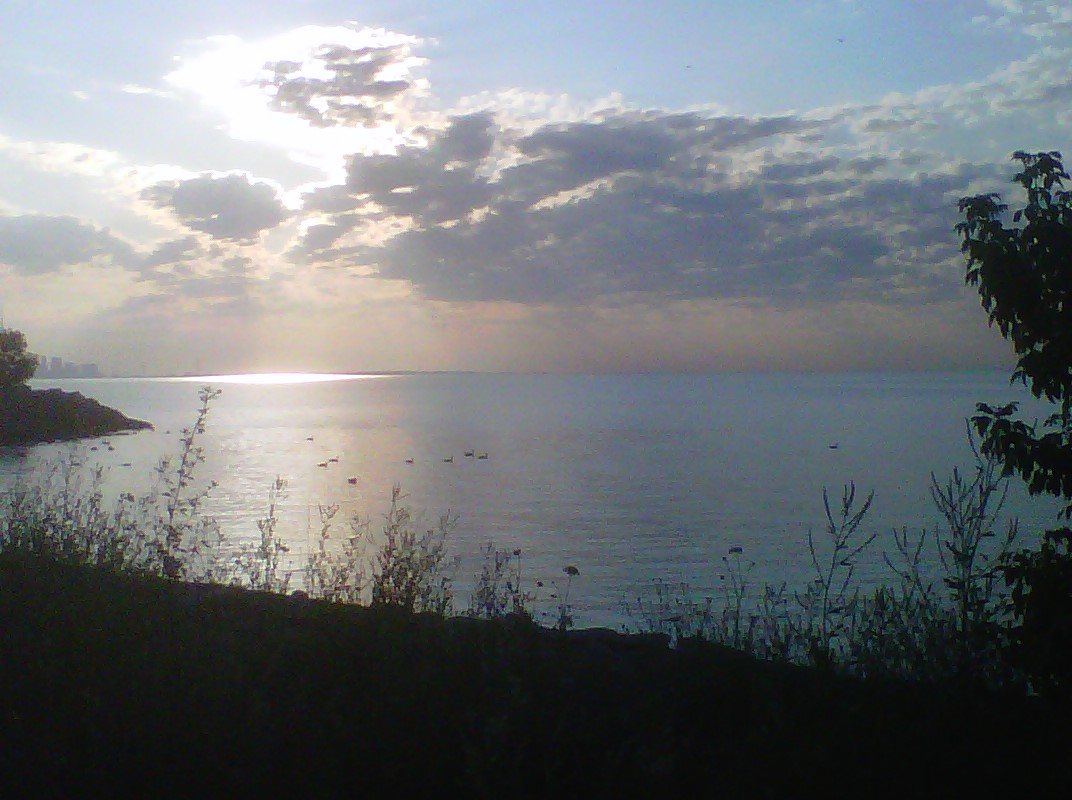
Weather Facts
the real 'Greatest Show On Earth'!
Weather is the real 'greatest show on earth'. Its free. Its happening all around us 24 hours a day. This section on weather facts and how weather works is designed to give you a practical, basic guide to the great weather engine that drives our climate. Because ... weather lies at the very heart of sailing.
I keep saying that the Great Lakes are really inland seas. Their vastness takes them way past anything 'lake-like'. Prudent sailors approach the Great Lakes with a mixture of awe (their sheer size), respect (for their power and the challenges they pose), caution (because of the enormous forces at play) and humility (because we are so very very small as we cross their surface).
Because of their size, the Great Lakes have their own impact on the general weather systems. These continual alterations give us those long, glorious, warm, clear, summer days as well as rapidly developing thunderstorms so intense they can threaten our very survival.
Lets look first at where weather comes from and then, on some following pages, the main elements that make up weather. The goal is not to make weather experts out of everyone but to give some insights into how weather works. With a general understanding of whats happening and about to happen, hopefully, you will have a safer, more interesting sailing experience.
Environment Canada has published an excellent program on Weather. A free resource, it is available for download on the RESOURCES page.
So ... Where does 'weather' come from?
We know that the earth is surrounded by an 'ocean' of air. That
'ocean' extends hundreds of kilometres out from the earth's surface.
However, at least half of it lies within 3 mi / 5 km of the earth's
surface. The lowest layer surrounding the earth is called the
troposphere – a layer that extends up approximately 7.5 mi / 12 km. All
weather happens here. Above the troposphere lies the stratosphere. This
layer serves as a cap, ensuring that all weather occurs below it While
many cloud systems occur at distances relatively close to the earth's
surface, those massive thunderheads that we see on a warm summer
afternoon can reach all the way to the top of the troposphere!
How It Starts
Something is needed to kick start the weather. And that something is the
sun – more particularly the heat of the sun. The heat energy from the
sun is the fuel for nature's great weather machine. And with the process
underway, it cycles endlessly, regulated and moderated by clouds and
bodies of water.
When the sun's rays strike the earth, they do so much more
strongly at the equator than at the poles. This is because the earth's
axis is tilted, relative to the sun, by 23.44°. This causes air at the
earth's surface to warm and rise. As it rises, it cools. This cold air
is displaced by continually rising warm air beneath it and, as a result,
'spills north and south before beginning to sink back to the earth's
surface. Once near the surface, this cold air is drawn back towards the
equator to be warmed and begin the cycle all over again. With no other
outside forces, our weather would be this one simple, gigantic
circulation system. BUT – as well all know only too well, nothing is
ever simple.
Adding A 'Twist' To Things
Lets add another factor. The earth is not stationary in its rotation
around the sun. As it moves around the sun, it spins on its own axis.
Without going into details, suffice it to say that as the earth spins,
it causes flowing things like air or water to be deflected. In the
Northern Hemisphere, the deflection is to the east, in the Southern
Hemisphere to the west. This effect is known as the Coriolis Effect.
(and no, it is not why the water in your sink spins as it drains –
that's a myth!)
This rate of deflection increases as you move away from the equator and, in mid-latitudes such as ours, sets up strong, persistent westerlies. These westerlies create the boundary zone along which weather systems move and are present much of the time over the Great Lakes.
It can appear complex, but it is oh so elegant!
Some Water With That?
What happens when water gets added into the mix? Have you ever
considered just how odd water is as a substance. It is the only
substance that can change from all three states – solid, liquid and gas –
at surface temperatures. Also, it is the only substance that is lighter
in a solid state than as a liquid! (thank goodness or we would never
enjoy the tinkle of ice cubes in a cool refreshing glass of our
favourite!)
What water does is moderate temperature changes. As air heats and cools, moisture is absorbed or released as the temperature changes. As moisture is released, it appears in the form of clouds. Inside clouds, as this same heating and cooling is happening, heat is released or absorbed. This results in updrafts that cause clouds to grow and grow or in downdrafts as cooler air sinks. The result is an out-of balance system. And we experience the winds that are generated as the system seeks to continually balance itself.
Ok, so lets look at some specific elements that make up weather and that are so important to sailors.
Click here to learn about cloud types and their meanings
Click here to learn about barometric pressure and why it is a vital indicator
Click here to learn about weather fronts and how they affect us
Click here to return from WEATHER FACTS to HOME
The Complete Log Book For Cruising Sailors
written by a sailor for sailors

a practical, easy-to-use yet thorough format to record all of the necessary information about your boat and any cruises you take – whether exploring home waters or voyaging to distant ports across the Great Lakes.
.
Click here for more details

The Most Complete Marine Bookseller on the Great Lakes
Order Online - Shipped Everywhere
The Nautical Mind:
- Instant Weather Forecasting
- Coastal and Offshore Weather, the Essential Handbook
- Mariner's Weather Handbook
- Weather for Sailors
There is no such thing as bad weather, only different kinds of good weather.
John Ruskin
Wind is to us what money is to life on shore
Sterling Hayden
Wanderer
I loved cruising the coast of Maine. For one
thing, it helped conquer my fear of fog. Not that I have learned to feel
secure in the fog, but at least I have learned how to grope without
panic.
Herb Payson
Sea Foam, SAIL
There is no such thing as bad weather - only bad clothes.
Norwegian sailor's saying
Weather forecast for tonight: dark. Continued dark overnight, with widely scattered light by morning.
George Carlin